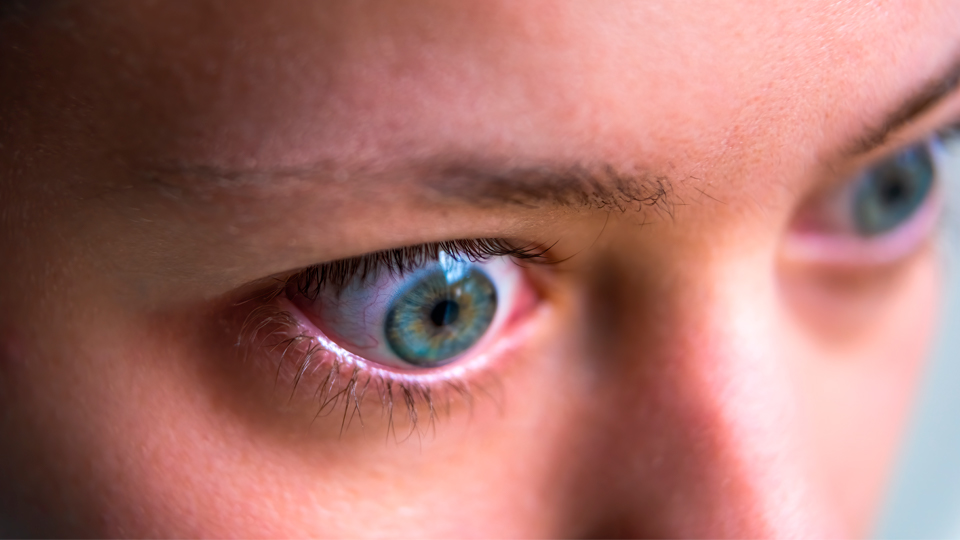How to Protect Your Eyes from Sandstorms and UV Damage in the UAE
18/04/2025

27/08/2024
Thyroid disorders, particularly those involving the thyroid gland's hyperactivity, have far-reaching effects beyond the more commonly known symptoms of weight changes, fatigue, and mood swings. One of the lesser-discussed yet significant complications of thyroid dysfunction is its impact on eye health. Understanding this relationship is crucial for both patients and healthcare providers, as early detection and management can prevent severe and sometimes irreversible damage to the eyes.
Understanding Thyroid Disorders
The thyroid gland, a small butterfly-shaped organ located in the neck, plays a critical role in regulating the body's metabolism through the production of hormones, primarily thyroxine (T4) and triiodothyronine (T3). These hormones influence various bodily functions, including heart rate, body temperature, and energy production. Thyroid disorders, such as hypothyroidism (underactive thyroid) and hyperthyroidism (overactive thyroid), occur when the gland produces too little or too much hormone, respectively.
Graves' disease, an autoimmune disorder, is the most common cause of hyperthyroidism. In this condition, the immune system mistakenly attacks the thyroid gland, leading to an overproduction of thyroid hormones. A notable complication of Graves' disease is Graves' ophthalmopathy (also known as thyroid eye disease or TED), which directly affects the eyes. In these patients the immune system mistakenly attacks also the muscles, fat and connective tissue surrounding the eyes.
Thyroid Eye Disease (TED): A Closer Look
Thyroid eye disease is an inflammatory condition that affects the tissues around the eyes, including the muscles, fat, and connective tissue. It is estimated that up to 50% of individuals with Graves' disease may develop some form of TED, although the severity can vary widely.
The symptoms of TED can range from mild to severe and may include:
1. Bulging Eyes (Proptosis): One of the hallmark signs of TED is the protrusion of the eyeballs, giving the appearance of bulging eyes. This occurs due to inflammation and swelling of the tissues behind the eyes, pushing them forward.
2. Dry Eyes, watery eyes and Irritation: Inflammation can disrupt the normal function of the tear glands, leading to dry eyes, redness, and a gritty sensation. The bulging of the eyes may also prevent the eyelids from closing completely, exacerbating dryness and irritation.
3. Double Vision (Diplopia): As the muscles around the eyes become inflamed and swollen, they may not function properly, leading to misalignment of the eyes and double vision.
4. Eye Pain and Pressure: Patients with TED may experience pain or a sense of pressure around the eyes, particularly when looking in different directions.
5. Light Sensitivity (Photophobia): Inflamed eye tissues can make the eyes more sensitive to light, causing discomfort in bright environments.
6. Decreased vision: Sometimes related to any damage on the ocular surface like a keratitis ( corneal scratches), corneal ulcers due to incomplete eyes closing at night, or even could be related in severe cases to a damage on the optic nerve . This severe cases are a medical emergency that need to go as soon as possible to an ophthalmology hospital to prevent an irreversible loss of vision.
7.increase in the intra ocular pressure (glaucoma )due to compression by the inflamed tissue and muscles .
8.corticosteriod used in treatment can cause glaucoma or opacity in the lens (cataract ) .
Impact on Quality of Life
The effects of thyroid eye disease can extend beyond physical symptoms, significantly impacting a patient's quality of life. The changes in appearance, such as bulging eyes and eyelid retraction, can lead to psychological distress and social anxiety. Double vision and vision impairment can make daily activities, such as reading or driving, challenging and unsafe. These factors underscore the importance of addressing thyroid eye disease not only as a medical issue but also as a psychosocial one.
Management and Treatment
Early diagnosis and management of thyroid disorders are crucial in preventing or mitigating the effects of TED. Treatment typically involves a multidisciplinary approach, including endocrinologists, ophthalmologists, and, in some cases, oculoplastic surgeons.
For mild cases of TED, treatment may focus on managing symptoms, such as using lubricating eye drops for dryness or wearing sunglasses to reduce light sensitivity. In more severe cases, corticosteroids or new immunosuppressive therapies may be prescribed to reduce inflammation, and surgical options, such as orbital decompression surgery, may be considered to relieve pressure on the eyes and improve their appearance.
Additionally, managing the underlying thyroid disorder is essential. For patients with hyperthyroidism, treatments may include antithyroid medications, radioactive iodine therapy, or thyroidectomy (surgical removal of the thyroid gland) to regulate hormone levels and reduce the progression of TED.
Prevention and Awareness
Raising awareness about the link between thyroid disorders and eye health is vital for early detection and intervention. Patients with thyroid disease should be educated about the potential eye-related complications and encouraged to seek medical attention if they experience any symptoms of TED.
Regular eye examinations are also recommended for individuals with thyroid disorders, especially those with Graves' disease. Early intervention can help prevent irreversible damage and improve outcomes for patients with TED.
Conclusion
Thyroid disorders, particularly hyperthyroidism and Graves' disease, can have a profound impact on eye health. The development of thyroid eye disease can lead to significant discomfort, visual impairment, and a decline in quality of life. Early detection, appropriate management, and a multidisciplinary approach are essential in minimizing the effects of this condition and preserving eye health. Public health initiatives should focus on increasing awareness of this connection, promoting regular eye check-ups for thyroid patients, and ensuring that comprehensive care is accessible to those affected.